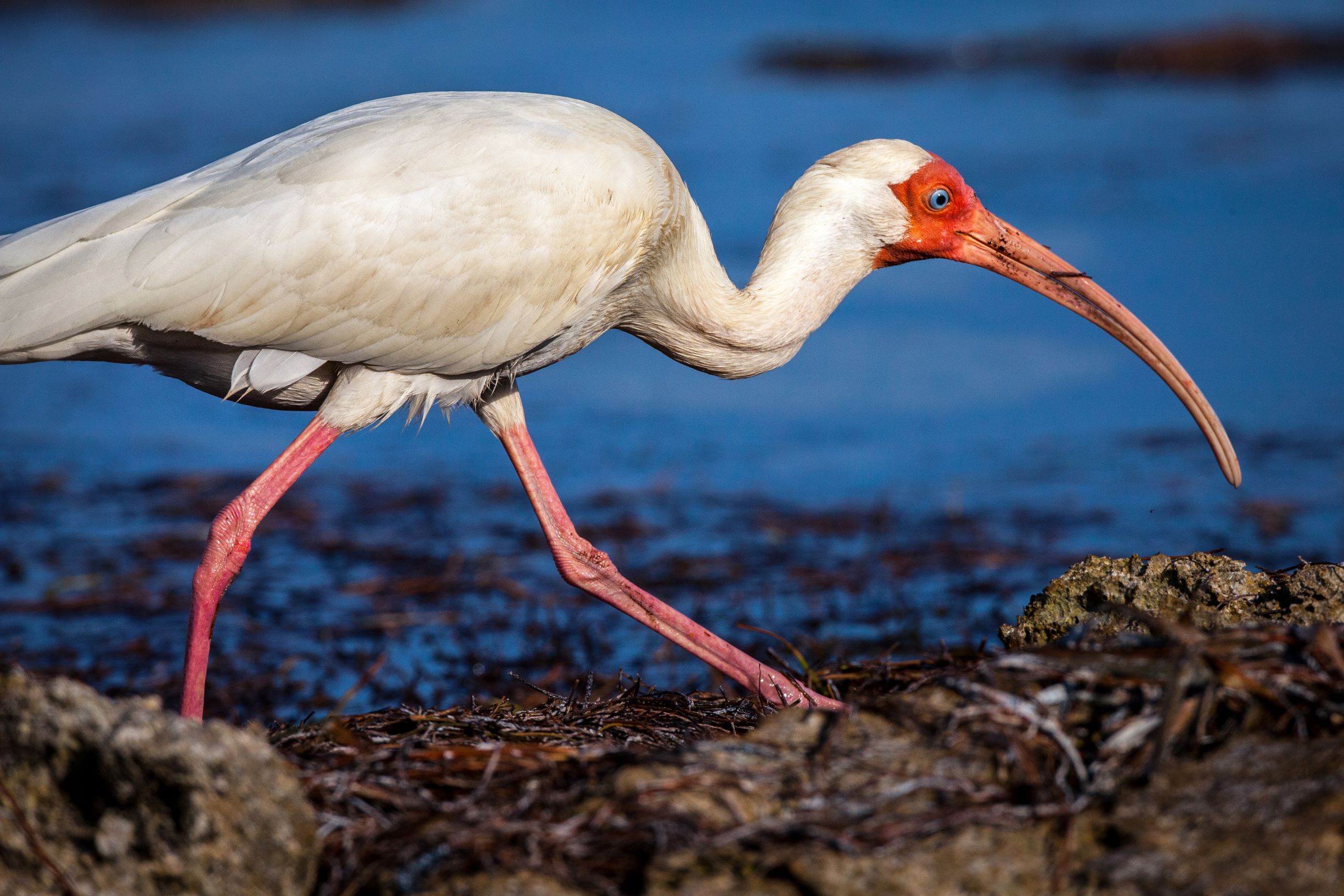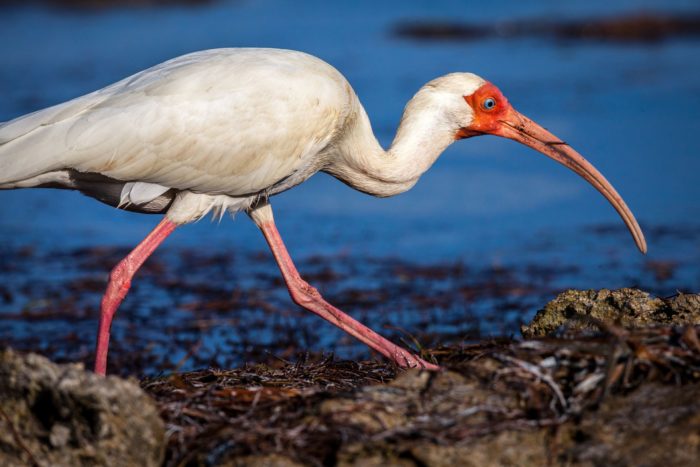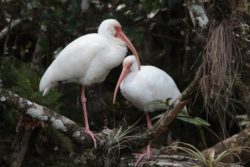
Sea Wonder: White Ibis
The white ibis (Eudocimus albus) is a wading wetland bird often associated with hurricanes as they are the last birds to leave before and the first to return after a storm due to their strong instincts to detect danger. They’re known for slowly walking through wetlands and shallow waters in search of marine worms, snails, young crabs, crawfish, and other tasty morsels.

Description
White ibises have long legs that are bright red or pink in color. Their bodies are football shaped and covered in white feathers (except for darker feathers at the very end of their wing tips) when fully grown or patchy patterns of white and brown feathers in their juvenile stages. Their necks are long, their faces have featherless red patches around their bright blue eyes, and their vibrant red bills are distinctly thin and curved, though ibises are born with straight bills that begin to curve at around two weeks old. Males and females are similar in size when fully grown, weighing nearly 2.5 pounds and reaching body lengths of a little more than two feet long. Their wingspan is nearly three feet, which allows them to fly at burst speeds of around 30 miles per hour.
Diet & Habitat
White ibises primarily feed on small marine and terrestrial invertebrates but will sometimes catch small fish and amphibians as well. To forage, they use their bills in a sweeping motion in waters less than eight inches deep and will also probe the soil or sediment to expose critters that burrow in it. Ibises will sometimes steal food from each other, and other bird species will often follow flocks of ibis and forage on the prey left in their wake.
White Ibises live in warm climates and are most commonly seen in southeast Florida and islands in the Caribbean. However, their full range can span from Virginia to Florida, over to Texas, and down the coast of Mexico and other Central and South American countries. They are also commonly seen in Florida Keys National Marine Sanctuary. These birds create nests in local trees and shrubs out of sticks and other debris, and prefer wetlands, marshes, estuaries, and coastal areas but can sometimes make their way into urban areas like parks and college campuses if water pools and food is available. Adults can thrive in saltwater, freshwater, or brackish water areas but juveniles don’t have a high tolerance for salt, so during nesting season they are more commonly found in freshwater areas.
Life History
 White ibises change their nesting grounds annually and males are responsible for building the nests, which takes about seven days. Unlike other bird species, white ibises are not monogamous despite the fact that they form pairs of males and females that mate together annually – males actually mate with more than one female and only protect the nest of one. The breeding season in North America often takes place in the spring but is dictated by food availability and environmental conditions, so it can also occur in summer and even fall.
White ibises change their nesting grounds annually and males are responsible for building the nests, which takes about seven days. Unlike other bird species, white ibises are not monogamous despite the fact that they form pairs of males and females that mate together annually – males actually mate with more than one female and only protect the nest of one. The breeding season in North America often takes place in the spring but is dictated by food availability and environmental conditions, so it can also occur in summer and even fall.
Each year, females will lay as many as five eggs per year with three being the average. The eggs are cream or blue-green in color with brown spots all over the shell. Males and females both participate for egg incubation (about 21 days) and hatchling care and feeding (40-60 days) before the juveniles begin leaving the nesting grounds to forage with adults. Some ibises stay with the group they were born into and others leave the group entirely. At around two years old, juveniles reach sexual maturity and begin trying to find a mate. The oldest known white ibis was at least 16 years old when it was found in Florida in 1972.
Threats & Conservation
The white ibis is not a threatened or endangered species, but their populations are declining due to coastal development and habitat loss. Other challenges like physical and chemical pollution, climate change, and human interactions. They receive state protections in Florida under its Endangered and Threatened Species Rule and federal protection under the U.S. Migratory Bird Treaty Act.

 White ibises change their nesting grounds annually and males are responsible for building the nests, which takes about seven days. Unlike other bird species, white ibises are not monogamous despite the fact that they form pairs of males and females that mate together annually – males actually mate with more than one female and only protect the nest of one. The breeding season in North America often takes place in the spring but is dictated by food availability and environmental conditions, so it can also occur in summer and even fall.
White ibises change their nesting grounds annually and males are responsible for building the nests, which takes about seven days. Unlike other bird species, white ibises are not monogamous despite the fact that they form pairs of males and females that mate together annually – males actually mate with more than one female and only protect the nest of one. The breeding season in North America often takes place in the spring but is dictated by food availability and environmental conditions, so it can also occur in summer and even fall.